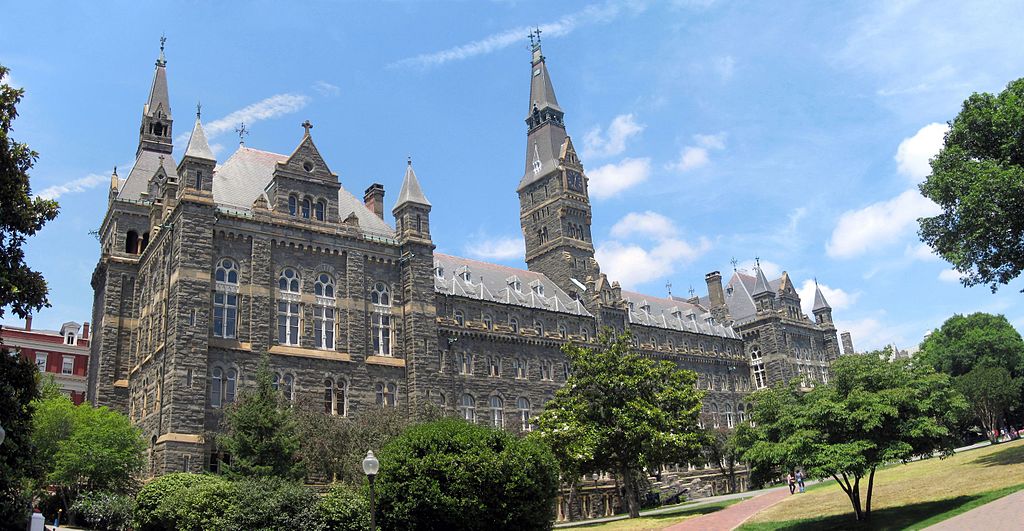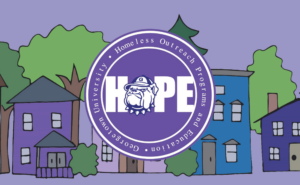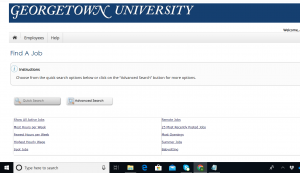The approximately 500 students on Georgetown’s campus are navigating not only a rigorous COVID-19 testing schedule and the burden of virtual school but also the challenge of forming a community of people, most of whom cannot meet in person, that can be trusted to protect them from the ongoing coronavirus pandemic
The first blow to this nascent community came early last Monday, Sept. 14, when the university released updated positive test data for students living on or near campus. That week, there were nine on-campus residents who tested positive, concentrated in Village A, along with one student in the neighborhood and three other individuals approved to work on campus. This was followed by an announcement Sept. 21 of five more positive cases on campus, and five in the neighborhood. These numbers follow two weeks of low case numbers, with only two students living on campus reported to have contracted the virus between Aug. 24 and Sep. 7.
“The initial reaction is general panic,” said Jameson Nowlan (SFS ’23), one student living on campus, of the increase in cases. According to Nowlan, as news of the numbers from Sept. 14 spread, the on-campus student group chat immediately lit up.
“They’re afraid, they’re scared, no one wants to get sent home,” Nowlan said. “You know we’re all here for a reason, and so people see a rising number of cases not only as a public health crisis but as a personal affront because it could potentially affect their ability to get an education this semester if they get sent back home.”
The majority of students living on campus are there because they applied for housing through Georgetown’s housing stability application released this summer, citing an inability to continue the semester at home because of insufficient housing or internet access or an unstable home situation. For these students, campus housing is a necessity the university reserves the right to take away with only 48 hours notice if the campus has to be closed to protect public health, according to an August move-in email sent to on-campus students.
“The kids who are living on campus know that it can be taken away from them within 48 hours. If I got an email from Georgetown today that said you have to vacate I would have to be gone by Monday,” Nowlan said on Friday. “And so there’s a real risk.”
Students began moving in in late August and continued to arrive for nearly a month, according to Nowlan. Most recently, Georgetown’s basketball teams moved to campus on Sept. 11. This continuous addition of students after the beginning of the semester spurred a series of questions from Nowlan about the cases—is it community spread or new arrivals?
“Who are these people, where did they come from, are they the kids who just moved in, have they been here, is there evidence of sustained community spread, or did they bring it from somewhere else?” Nowlan asked.
Georgetown is not providing specific information about the students who test positive, though the Sept. 14 communication included that seven students who tested positive were living in Village A. Those students, according to the email, have been moved to designated isolation areas on campus. The rest of the on-campus residents are now grappling with the implications of rising cases.
Jane Cai (SFS ’23), lives in Village A where most of the cases were reported on Sept. 14. As numbers came out, multiple friends living off-campus texted her the numbers, and she found a slip on her door from the university updating her on the situation.
“There’s a little bit of that scare and then you talk yourself down,” Cai said of her initial reaction. Once she confirmed none of the limited friends she’s seen had been in contact with someone who tested positive, she turned her attention to the chat of students on-campus, which she said hosted a variety of reactions.
“On-campus students, we have a very delicate relationship with this. We can’t really afford to be careless about it,” Cai said. “Most of us are here because of housing instability, we don’t really have a place to go if we are sent home”
As some students wondered where the cases had originated, others began to assume the increase must be the result of students ignoring guidelines and partying. Though Cai wants fellow students to be safe, she also urged understanding about the variety of ways people could have been exposed.
“Some people who work off-campus jobs, they can’t avoid that risk, and no one deserves to be shamed for their job like especially in a pandemic, you need income,” Cai, who had just gotten off work at her own job, said. “People deserve some grace when it comes to this.”
Still, the question of what to do if students appear to be violating COVID-19 rules remains. Though students living on campus have been asked to follow certain guidelines, including wearing a mask at all times and not congregating in groups over ten, Nowlan said the university has focused on personal responsibility more than community reporting, meaning students aren’t sure what to do if they see someone breaking the rules.
“There were big questions in the group chat about not only are people breaking the rules but what to do if you see someone breaking the rules,” Nowlan said.
Floated options include talking to the person or household of concern, calling university professional staff, or, if the concern is at night, calling GUPD. This option has been heavily criticized, according to Cai, who pointed out the racial power structures at play when GUPD becomes involved.
“I think that has a lot to do with the conversation we’ve had this entire summer of involving police and that’s really uncomfortable because unfortunately a lot of on-campus students belong to marginalized groups who don’t have good impressions of the police,” Cai said.
Multiple students have reported attempting to inform the university of a potential concern and being transferred to the GUPD line automatically, causing them to end the call. Students can also use an incident reporting form provided by the university to alert Georgetown of noncompliance with COVID-19 policies.
To Nowlan, another confounding factor in the uncertainties of on-campus living is the fact students don’t always trust the information the university provides them. She reported that the week before, students had received a string of phone calls inaccurately informing them they were below the testing requirement of twice a week.
“The problem is a lot of students who got the phone calls have been getting tested twice a week and a lot of students who haven’t been getting tested twice a week didn’t get the phone calls,” Nowlan said. Some students who were mistakenly identified as behind on tests were not able to enter campus buildings, including the dining hall.
With incomplete information, students are tasked with deciding for themselves who to see, and how often. “We kinda have to police the system ourselves,” Nowlan said, mentioning she often asks her friends who else they’ve seen.
To both Nowlan and Cai, the biggest concern for future cases are students living off-campus. While they observe on-campus students, especially those there because of housing instability, largely following the rules, they worry students living in the neighborhood and around the city who visit campus may not do the same.
“Among the kids who are approved to live on campus that’s the biggest concern,” Nowlan said.
Cai made a direct plea to students off-campus: if you come to Georgetown, do so safely.
“You might have the luxury of having a place to go, but we don’t, so for our sake, stay safe,” Cai said, before adding “For your sake as well.”





